Written by Vicky, staff member Halifax Central Library
When you're a history buff, it's easy to get hung up on something.
If you're compiling your genealogy, you might find yourself unable to rest until you find proof that Great Uncle So-And-So was adopted. If you're into old cemeteries, you might find it impossible to move on without writing down each and every faded stone inscription. Even small things become an obsession, and you find you can only satisfy the hunger of curiosity by cooking up some delicious answers.
Personally, my recent fascination is this:
 WHY ARE THESE THREE HOUSES ON ALMON STREET THE SAME?
WHY ARE THESE THREE HOUSES ON ALMON STREET THE SAME?
I MUST KNOW! ANSWERS MUST BE FOUND!
So get ready for a perhaps unnecessarily deep dive into the history of these three houses and the first families to live in them.
Part 1: Charles Alexander Mosher
Charles Alexander Mosher was born on January 28, 1876, to Edmond and Arabell (nee Hiltz). He was born in Indian Point, Nova Scotia, a small community just outside of the town of Mahone Bay. His father worked as a farmer, and his mother managed the household of eight children. Though the family appears to have spent most of their lives in Indian Point, they are also noted as living in Blockhouse, Nova Scotia, in both the 1881 and 1891 census. It is possible their homestead and farm were in separate areas as Indian Point and Blockhouse are not far away from one another. In a modern vehicle, they are only 10-15 minutes apart, or about a two-hour walk. It is noted in multiple sources that the family were Lutherans, which means it is likely they attended services at the iconic St. John's Lutheran Church in Mahone Bay (the middle one).
Growing up along the water, it is little surprise that Charles was drawn to it. As he came of age, he trained as a fisherman and made his living on the ocean. For a number of years, Charles disappeared from provincial directories and the Canadian Census, likely due to his being away at sea. But despite his oceanic travels, Charles still managed to meet people and build important relationships. Sometime in the 1890s, Charles met Matilda Elizabeth (Lizzie) Feltmate from Whitehead, Guysborough County. Her father, James, was also a fisherman, so it is possible that he and Charles worked together on the same vessels or at least frequented the same ports. Charles and Lizzie's relationship blossomed into love, and they were married on April 24, 1897. After their wedding, the couple chose to stay close to Lizzie's family in Whitehead and settled down in nearby Yankee Harbour. The couple had two children while living in Yankee Harbour: Jessie Anna, born June 14, 1900, and Gertrude Arabelle, born January 25, 1904. On December 1, 1909, Lizzie gave birth to a son, Charles Earl (Earl), but by this time, the family had moved to Canso, Nova Scotia.
The family continued to live in Canso for many years. Charles continued to work as a fisherman, eventually earning the title of Captain. On September 7, 1920, his daughter Jessie was married in the Canso Methodist Church to Charles Parker Dodge, a mechanic from Havelock, New Brunswick. By the 1930s, the family had made another move and were living at 11 (now 1593) Preston Street in Halifax. Here, the Mosher family continued to grow. In October 1932, Earl married Jessie Mae Strum of Mahone Bay at the Oxford Street United Church, and Charles found himself making new friends.
Part 2: Richard Earley
Richard Earley was born in Gateshead-on-Tyne, England, to Jacob Earley and Mary Hall on November 23, 1884. He was baptized at St. Joseph's Catholic Church in Gateshead just before Christmas that same year. Not much is known of his early life, but we do know that he trained as a chef and that he travelled to Canada sometime in the early 1900s. Records show that at least as early as 1914, he was living on George Street in Toronto, Ontario.
In July 1914, World War I began. Britain declared war against Germany and Austria-Hungary, and Canada—then a part of the British Empire—automatically joined in the fight. At the time, Canada did not have a strong military presence, so Prime Minister Robert Borden called for volunteers. Approximately 35,000 men volunteered to join the fight, and the Canadian Expeditionary Force (CEF) was born.
In February of 1915, having made his way further west to Saskatoon, Saskatchewan, Richard joined the Canadian Army as part of the CEF. On his attestation documents, he is described as 5'9.5" tall, with a dark complexion, gray eyes, and dark hair. He is also described as having a hairlip scar on his right side. Records state that he was unmarried and a Roman Catholic. He was approximately thirty years old when he joined the force. Richard's regiment number was 114133, and he became a part of the 9th Regiment of the Canadian Mounted Rifles (CMR) under the command of Lieutenant-Colonel G. C. Hodson. They set sail for England from St. John, New Brunswick, aboard the ship California in November of 1915.
Many members of the CMR 9th Regiment were concentrated in the United Kingdom, with only some being used as reinforcements during the war effort. It is possible that Richard was able to steer clear of direct combat and spend his time with the army in relative safety. One good story to come out of Richard's return to England was a love story. In July 1916, he married Katherine Emmaline Davis, daughter of Francis William Davis and Lydia (Howey) of London. They were married in Elham, a village in Kent, England. Within two years, the couple welcomed a baby girl, Phyllis Lydia Katherine, born in Brighton, England, on May 13, 1918.
After the war, Richard had an opportunity to immigrate back to Canada. In March 1923, he travelled on the ship Canopic and set sail for Halifax. His passenger declaration from that trip states that his passage was paid for by the Nova Scotia Government and that he was coming to Halifax to work as a pastry chef at the Halifax Hotel. Although the exact reason why the government paid for his trip is unknown, it is likely that it was under the umbrella of the Empire Settlement Act of 1922. This act attempted to promote British immigrants to Canada by offering incentives like reduced transportation costs, training, and financial aid. Whatever the reason, Richard set sail with Katherine and Phyllis joining him the following September.
While in Halifax, the Earleys lived in a number of locations. When he first came to the city, Richard lived at the Edmonds Grounds Estate at the head of the North West Arm. In 1926, the family lived at 72 Coburg Street between LeMarchant and Oxford Streets. It was in November of this year that Katherine's mother and sister (both named Lydia), came to visit on the Sachem. Though the younger Lydia is likely to have returned to England, mother Lydia stayed in Halifax eventually taking up residence at 51 (now 1161) South Park Street.
By the spring of 1928, the family was living at 6 1/2 Watt Street. It is here that tragedy struck. Twice.
Over the previous two years, young Phyllis suffered from mastoiditis, an infection that affects the mastoid bone behind the ear. Mastoiditis has a number of symptoms, including redness, pain, swelling behind the infected ear, fever, fatigue, discharge from the ear, and headaches. Without treatment, mastoiditis can lead to hearing loss or the development of a deadly meningitis infection. In July of 1928, Phyllis had surgery to address the infection. However, about two weeks later, she began experiencing the symptoms of tuberculous meningitis, a specific type of meningitis where tuberculous bacteria infect the lining of the brain and spinal cord. Phyllis, whose body was already fighting mastoiditis and recovering from surgery, simply could not fight off the new infection and passed away on August 16, 1928. She was ten years old. Only months later, in October, Katherine's mother, Lydia, succumbed to cancer at the age of 68. They were both buried in Camp Hill Cemetery.
After Phyllis and Lydia's deaths, Richard and Katherine moved to 19 (now 6237) Watt Street, and by 1940 had moved to 7 (now 1589) Preston Street. Coincidentally, this was the house next door to Charles and Lizzie Mosher.
Part 3: Edna Lillian Slack
Edna Lillian Slack was born in Glace Bay, Nova Scotia, on November 11, 1907. Her parents, William Bernard and Agnes Maude (nee Weatherbe/Weatherby), were both from communities near Truro, Nova Scotia. Her father worked in Halifax as a grocer at William Canaven & Co Grocers on Lockman Street in Halifax as early as 1896, and her parents were married in Halifax on February 26, 1900. These records suggest the family was establishing a life in the city. However, the family disappeared from both census records and available city and provincial directories at this point. We do know that Edna's older brother Alfred was born in 1903, thanks to later census records, but where his birth took place is unknown.
Records confirm that by 1910, the family was living at 172 Lockman Street in Halifax. This was the home of James and Olive Weatherbe, Agnes' parents. Around this time Agnes gave birth to another child, Edna's youngest brother Harold. Though Harold surely brought a lot of joy to the household, the following year would be tragic for the family. In January, Edna's father became ill with tuberculosis, and by early February, he had succumbed to the disease. He died on February 2, 1911, at 52 years old.
Edna's mother was in a precarious position. Without William, she had no income. To make ends meet, Agnes began using her skills as a seamstress to support the family financially. Initially, she worked for P S & D C Service, a department of the Canadian National Railway. In later years, she was able to work for herself out of the family home on Lockman Street.
In December 1917, Edna and her family narrowly avoided disaster with the Halifax Explosion. Their home was located within a few kilometres of the blast when the ships Imo and Mont Blanc collided. When it was over, they were lucky enough to be just outside what was considered the area of total destruction. Though it is likely that their home would have suffered some damage, such as broken windows, etc, the family made it out of the disaster relatively unscathed.
In the late 1920s, Edna attended school to become a stenographer. A stenographer transcribes dictated notes, letters, and other testimonials into shorthand for later transcription. Though it is uncertain exactly which school she attended, it is highly likely that she went to the Halifax Shorthand School on Barrington, the Maritime Business College on College Street, or Murphy's Business College on Barrington Street. She would not need to wait long to utilize her newfound education. When she graduated in 1929, Edna was hired as a stenographer at the Maritime Telegraph and Telephone Company (MT&T).
The Slack family was a close-knit unit. Edna, her two brothers, and their mother continued to live together at 978 Barrington Street even after both her grandparents had passed (their address changed from Lockman Street to Barrington Street around 1917). Everything would remain status quo for Edna and her family until the late 1930s when Edna decided it was time to move away from Barrington Street.
The Houses
Post-World War I Halifax was nothing if not a time of change. The city's population had grown as a result of World War I, and yet so many had tragically lost their homes when the Halifax Explosion rocked the North End. The city was in need of homes that were efficiently built and affordable.
By the mid-1930s, having retired from his life at sea, Charles Mosher was looking to do something new and different with his life. Perhaps he'd always been interested in carpentry; perhaps during the years on his boat, he developed woodworking skills he had not yet officially put to use; or perhaps he simply saw a need and wanted to help fill it. Whatever the reason, Charles began to construct homes on Almon Street. Records available through the Halifax Municipal Archives confirm that multiple building permits for dwellings were issued in Charles' name. Using these permits and Halifax and Dartmouth city directories, we can confirm that 295 (now 6385) Almon Street was constructed sometime between 1938 and 1939, 291 (now 6373) Almon Street was constructed in the autumn of 1940, and 297 (now 6389) Almon Street was constructed in the spring of 1941.
The houses Charles constructed were simple but eye-catching. The main body of the homes consist of a simple two-story box shape topped with a gabled roof and a more-or-less centralized chimney. But what makes them interesting are the little details that callback to popular architectural styles from the past: the front entryways with the steeply pitched gable roofs hearken back to the Gothic Revival styles of the mid-1800s; the rounded windows bring you back to the late-1800s and the Italianate style; even the simplicity of the rectangular main bodies of each house brings to mind the Georgian Colonial styles of yore. And yet, the asymmetrical design suggests something quite modern for its time, a style that looked to go against tradition while still embracing it. Exactly what inspired Charles to build these houses using this particular design might never be known, but he would no doubt be proud to know that they have so far stood the test of time.
Edna was the first to arrive on Almon Street. She and her two brothers moved into 295 Almon Street not long after construction was completed in 1939. Richard and Katherine moved into 297 Almon Street around 1940. In a twist, Charles and Lizzie were the last to move into one of these matching houses, taking up residence at 291 Almon Street around 1941.
Though it is likely coincidence, or perhaps good fortune, that the Earleys purchased a house from a contractor who happened to be their neighbour, only to once again become neighbours with that same contractor, I'm not fully satisfied with that. In my mind, the two couples were good friends who were simply delighted at the prospect of continuing to be neighbours. Maybe they even played cards together or had a cold drink together on warm summer evenings. It might not be true, but it's a nice thought.
Epilogue
Unfortunately, Charles and Lizzie would only have a short time together on Almon Street. On April 25, 1949, Charles suffered a stroke and was unable to recover. He died the following day and was buried in Camp Hill Cemetery. Lizzie would continue living in the home her husband built for most of her life. It was only in 1963 that their house on Almon Street was sold, and Lizzie moved to 6450 Berlin Street to live with her son Earl and his family. In November 1964, Lizzie suffered a heart attack. She died on November 23 and was also buried in Camp Hill Cemetery.
Richard and Katherine did not stay at Almon Street for an extended period of time. Within five years, the couple had moved to 64 (now 2540) MacDonald Street. Richard continued to work at the Halifax Hotel as their pastry chef, but towards the end of his career, he also worked as a chef for the Halifax Club and the Carleton Hotel. Richard died in 1961 and was buried with his daughter and mother-in-law in Camp Hill Cemetery. After his death, Katherine, now suffering from Parkinson's Disease, moved to Kelowna, British Columbia, to live with her extended family. She passed away at home on August 20, 1974. Sources indicate her ashes were returned to Nova Scotia to be buried near her husband, daughter, and mother.
Edna worked at MT&T for more than forty years. She was also an active member of the Mulgrave Park Baptist Church. There she served as church secretary, a Sunday school teacher, a mission band leader, and the nursery school superintendent. She lived in her house on Almon Street until she passed away on April 20, 1986, her brothers having died several years before. She, too, was buried in Camp Hill Cemetery.
And so, these sweet matching houses have been passed on to new owners for generations. Decades down the line, they are still a part of a long story in the making, with each of these homes a book and each family living in them writing a new and exciting chapter.
The Finishing Lines
When you're a history buff, it's easy to get hung up on something, and sometimes the only way to satisfy the hunger of curiosity is to cook up some delicious answers. In the case of the history of the matching Almon Street houses, I believe I can consider myself full.
Library Sources
Halifax and Dartmouth, Nova Scotia, City Directory
Additional Sources
Almon Street Building Permits for C. A. Mosher, permit number 26237, Halifax Municipal Archives, 102-391
Canadian Expeditionary Force, The Canadian Encyclopedia
Canadian Expeditionary Force, Library and Archives Canada
Canadian Mounted Rifles, Library and Archives Canada
The Disaster that Reshaped a City, Canadian Geographic
Earley, Phyllis, Nova Scotia Archives
Earley, Richard, Library and Archives Canada
Empire Settlement Act, Canadian Museum of Immigration
First World War Service Numbers Guide, Library and Archives Canada
G. S. C. Glace Bay Sheet, Cape Breton Co, Nova Scotia Archives
Halifax Hotel, Nova Scotia Archives
A History of St. Joseph's Catholic Church, Gateshead
Hopkins City Atlas, Nova Scotia Archives
Lunenburg County, David Rumsey Map Collection
Plan of the City of Halifax, 1930, Nova Scotia Archives
Plan Showing Devastated Area of Halifax, Nova Scotia, 1918, Nova Scotia Archives
Tuberculous Meningitis, Meningitis Foundation
Special thanks to the fine folks at the Municipal Cemeteries Office and the Halifax Municipal Archives.

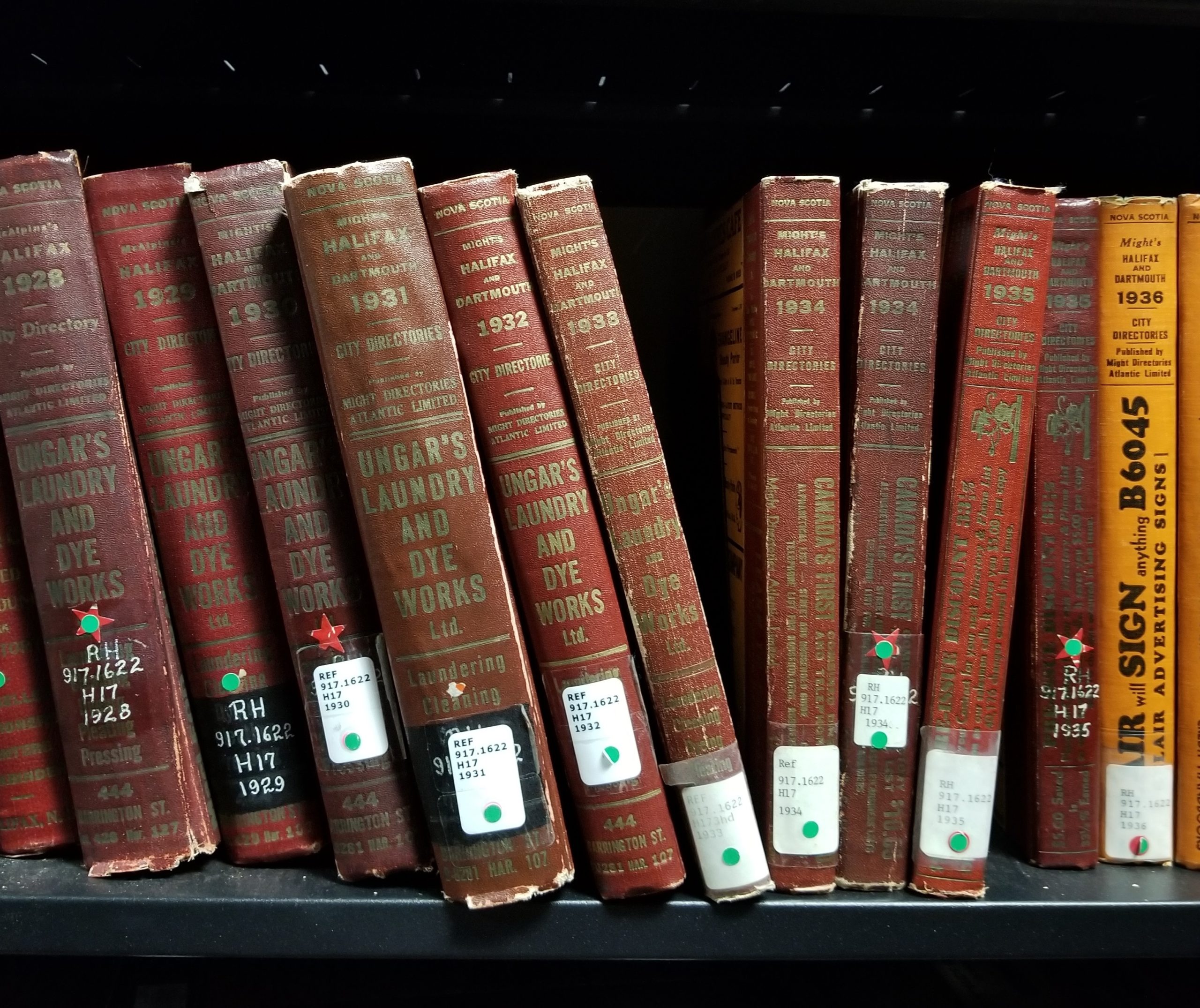
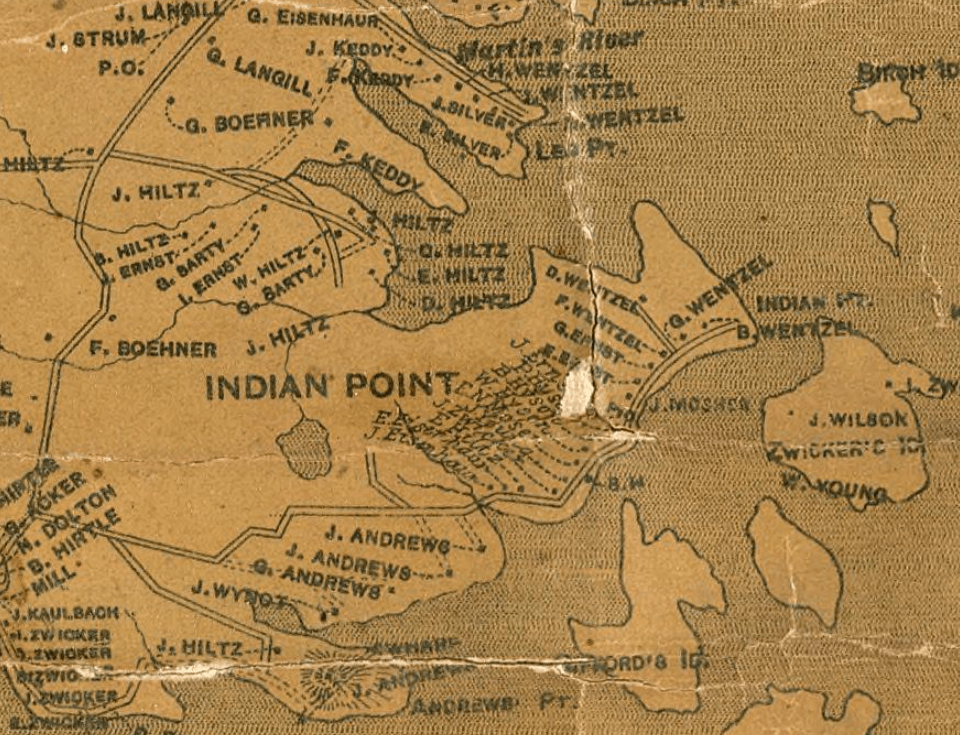

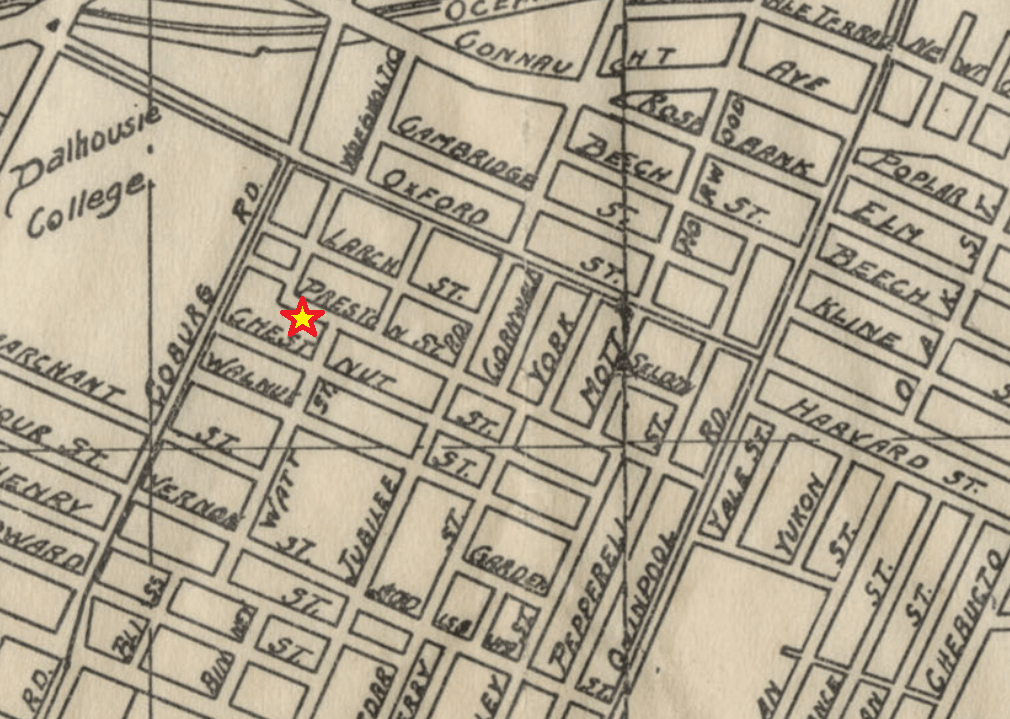
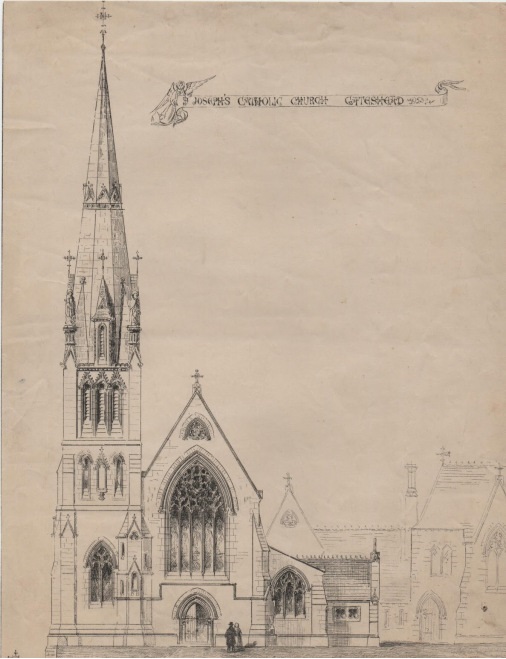
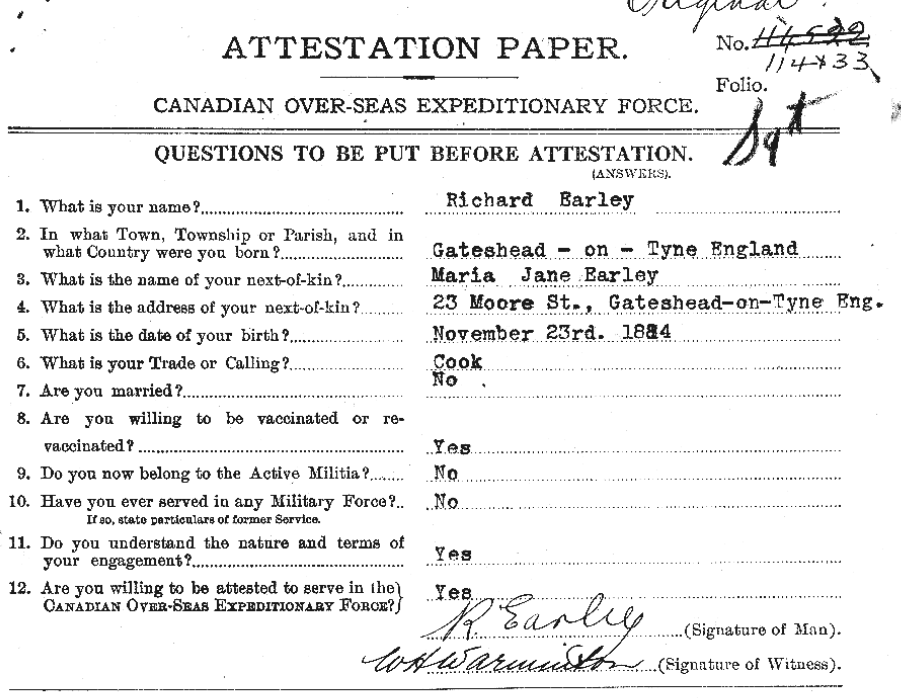

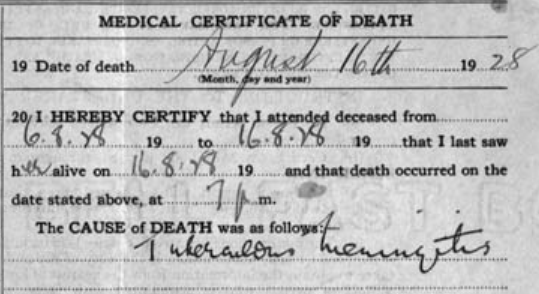
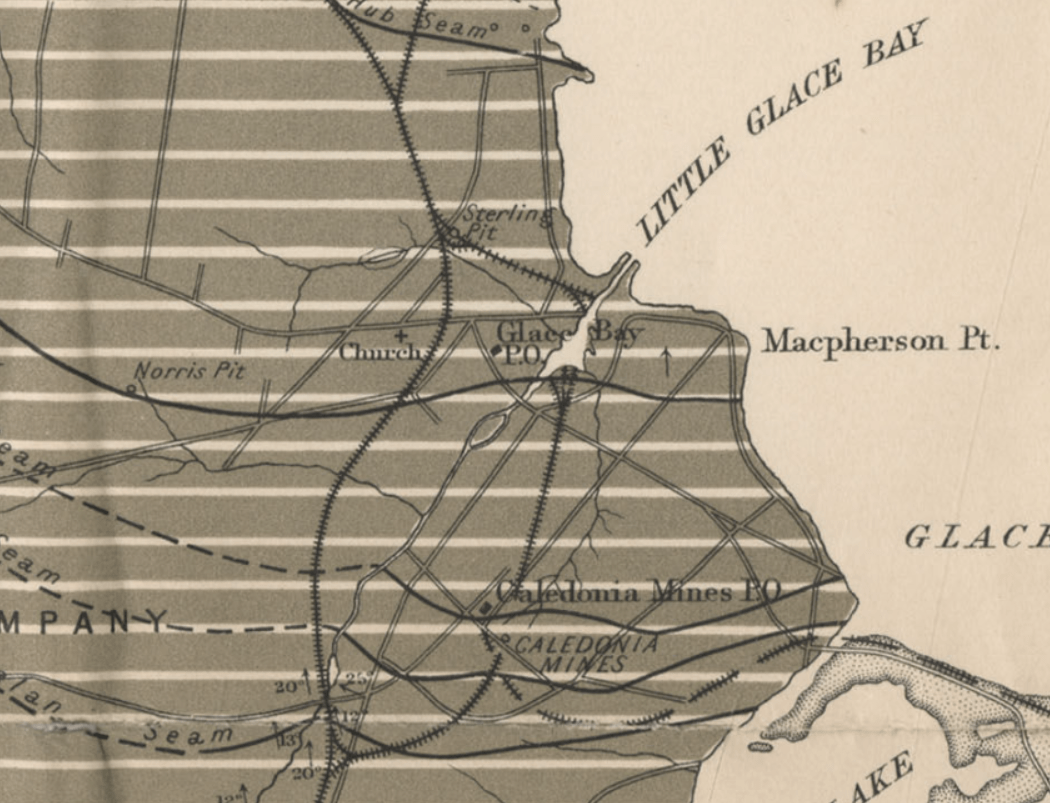


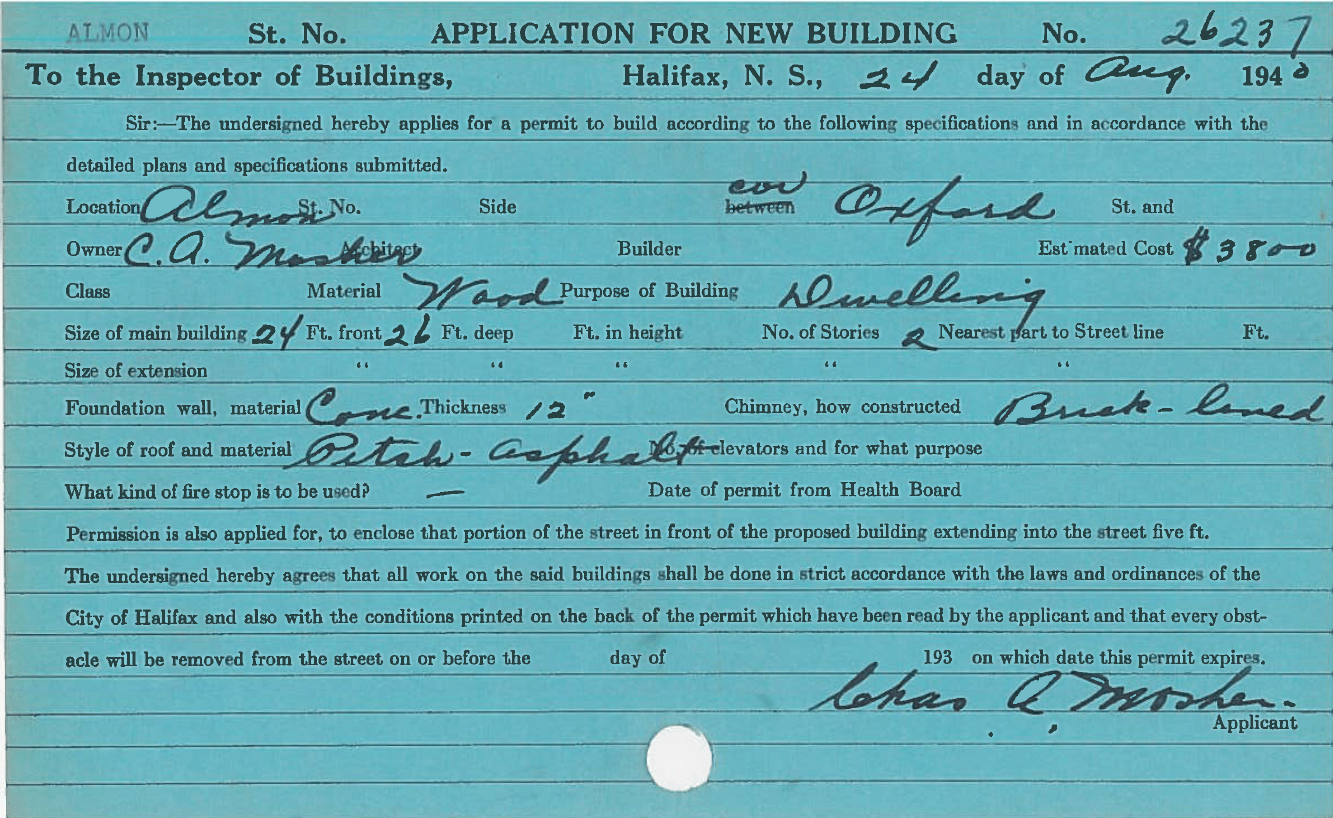
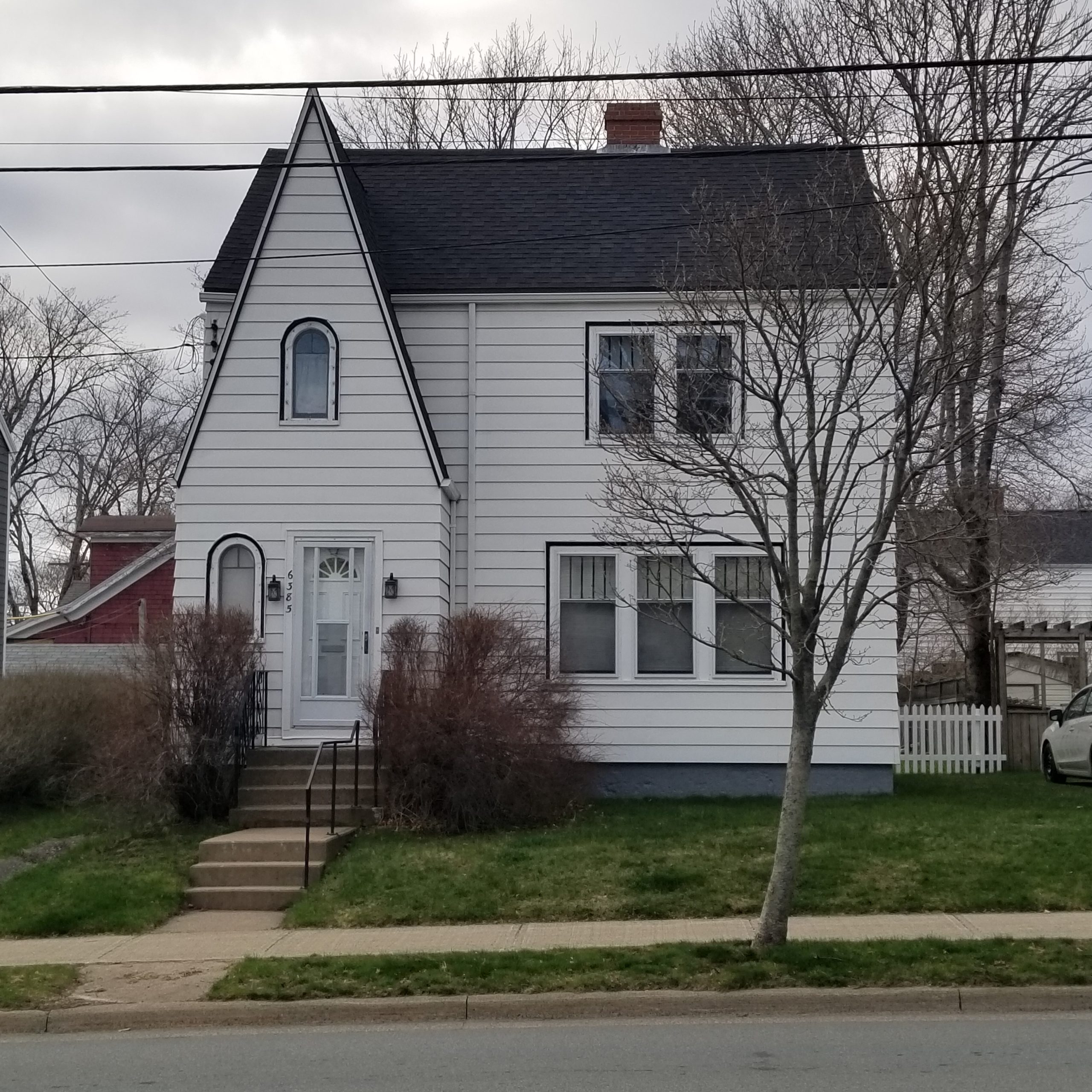
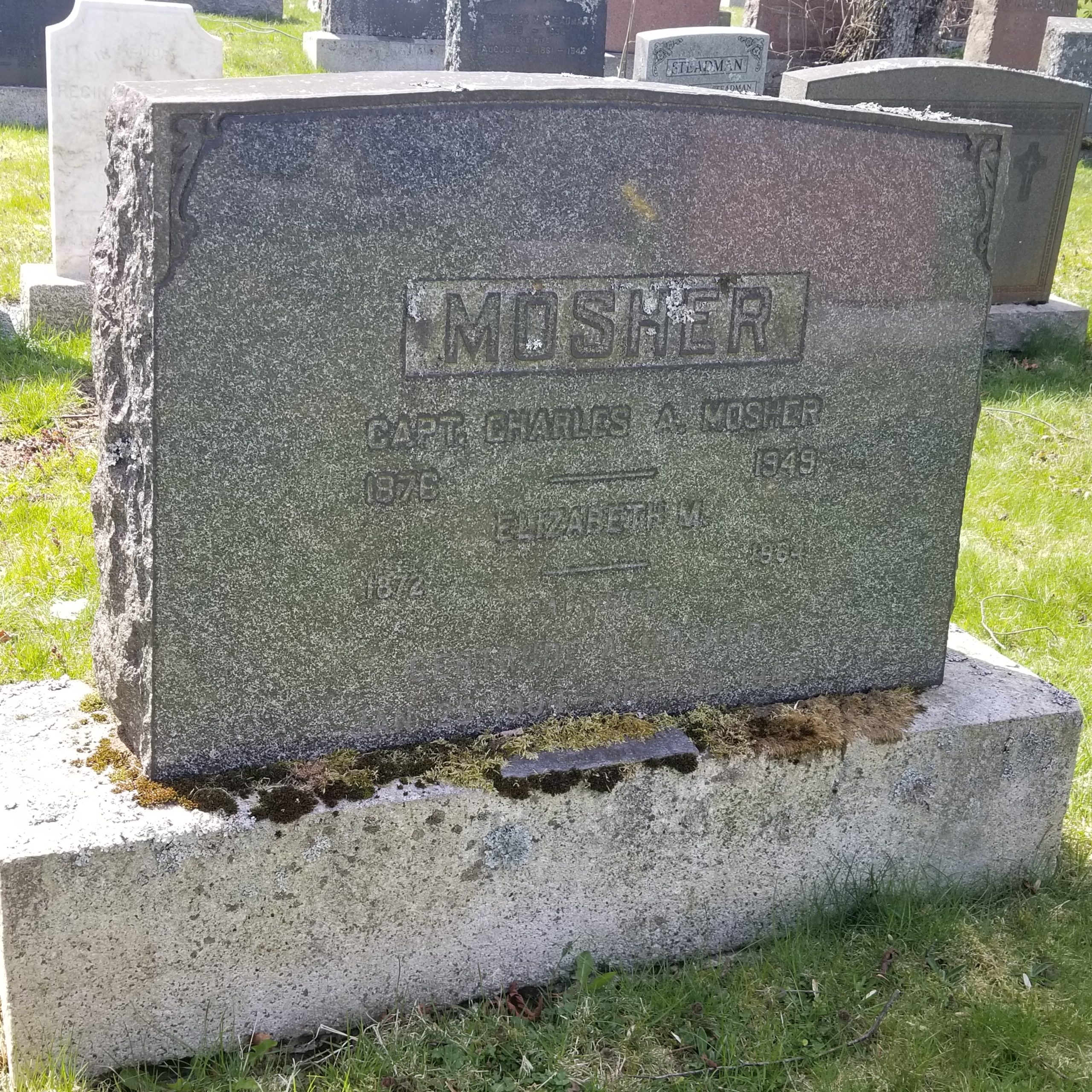

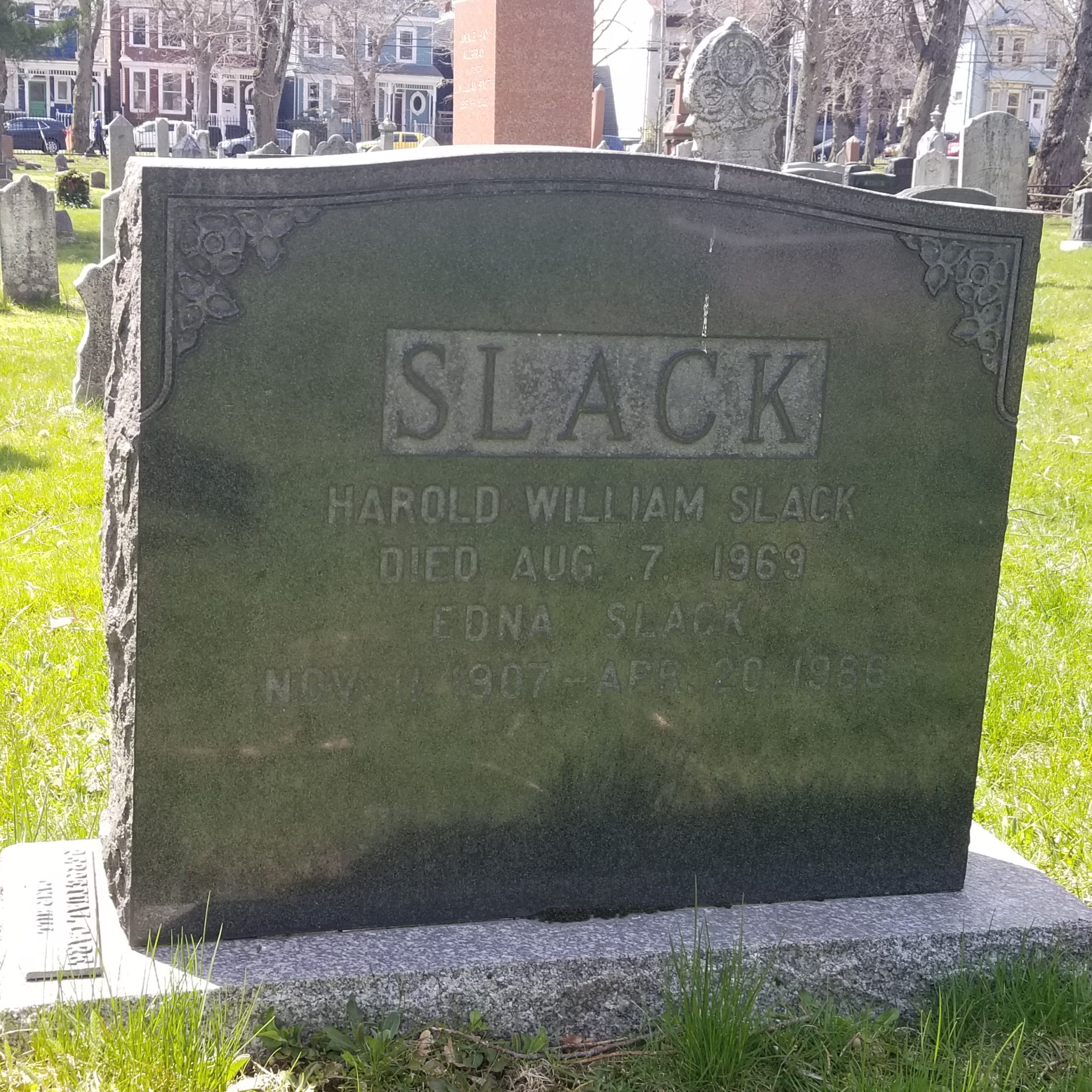


Add a comment to: Three of a Kind: Houses on Almon Street – A “Brief” and Not At All Definitive History